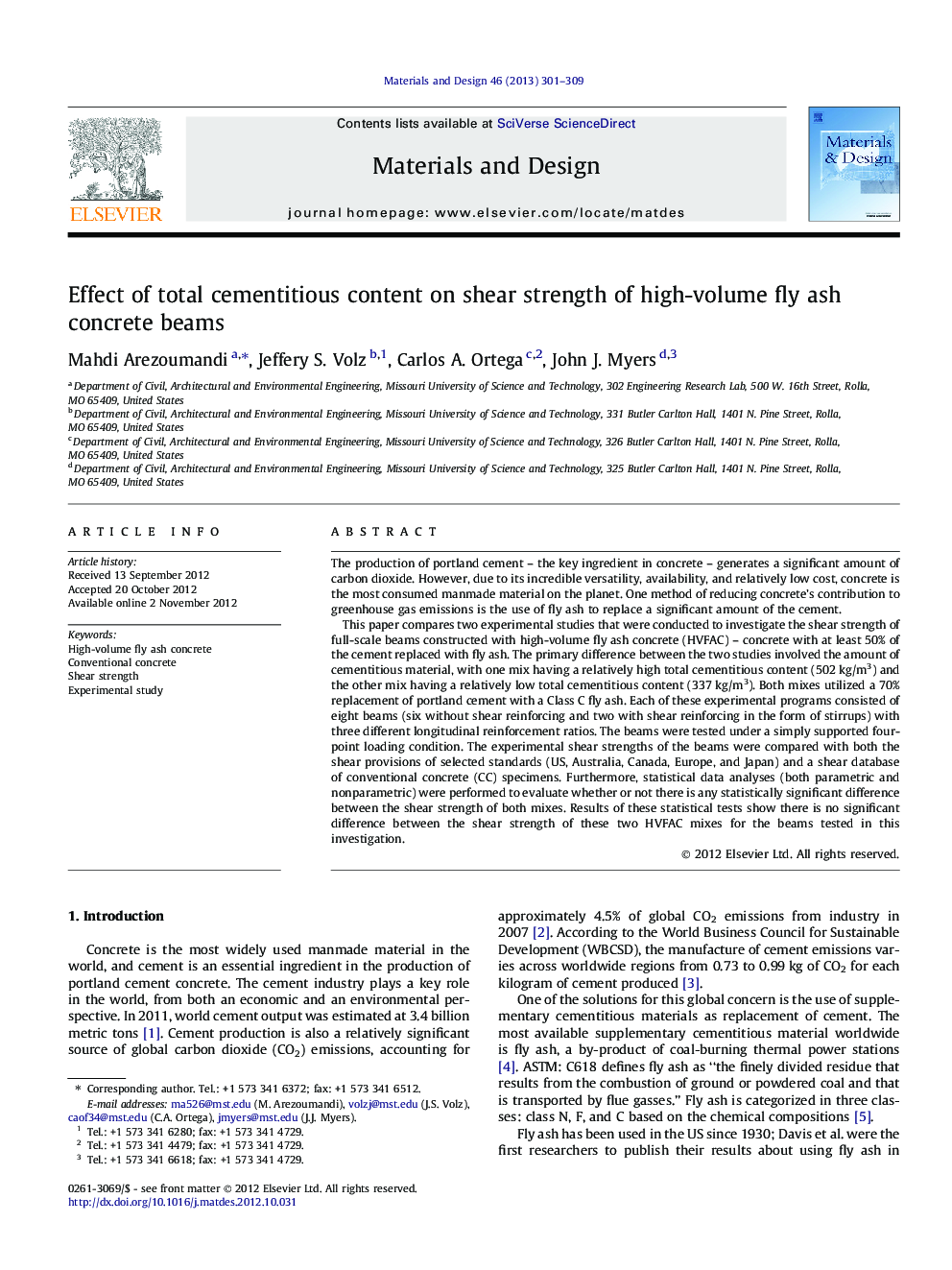| Article ID | Journal | Published Year | Pages | File Type |
|---|---|---|---|---|
| 830150 | Materials & Design (1980-2015) | 2013 | 9 Pages |
The production of portland cement – the key ingredient in concrete – generates a significant amount of carbon dioxide. However, due to its incredible versatility, availability, and relatively low cost, concrete is the most consumed manmade material on the planet. One method of reducing concrete’s contribution to greenhouse gas emissions is the use of fly ash to replace a significant amount of the cement.This paper compares two experimental studies that were conducted to investigate the shear strength of full-scale beams constructed with high-volume fly ash concrete (HVFAC) – concrete with at least 50% of the cement replaced with fly ash. The primary difference between the two studies involved the amount of cementitious material, with one mix having a relatively high total cementitious content (502 kg/m3) and the other mix having a relatively low total cementitious content (337 kg/m3). Both mixes utilized a 70% replacement of portland cement with a Class C fly ash. Each of these experimental programs consisted of eight beams (six without shear reinforcing and two with shear reinforcing in the form of stirrups) with three different longitudinal reinforcement ratios. The beams were tested under a simply supported four-point loading condition. The experimental shear strengths of the beams were compared with both the shear provisions of selected standards (US, Australia, Canada, Europe, and Japan) and a shear database of conventional concrete (CC) specimens. Furthermore, statistical data analyses (both parametric and nonparametric) were performed to evaluate whether or not there is any statistically significant difference between the shear strength of both mixes. Results of these statistical tests show there is no significant difference between the shear strength of these two HVFAC mixes for the beams tested in this investigation.
► Existing design standards conservatively predicted the capacity of the HVFAC beams. ► In general, the HVFAC beams exceeded the code predicted shear strengths. ► The cementitious content did not have effect on the shear behavior of the HVFAC beams.
